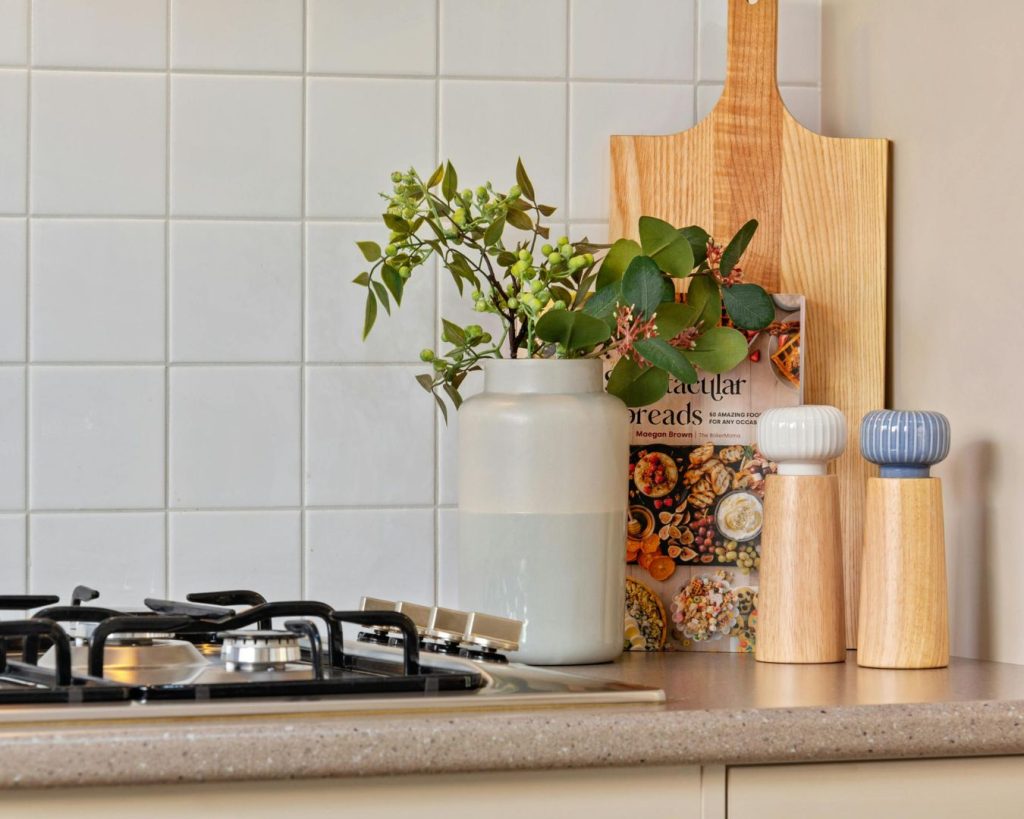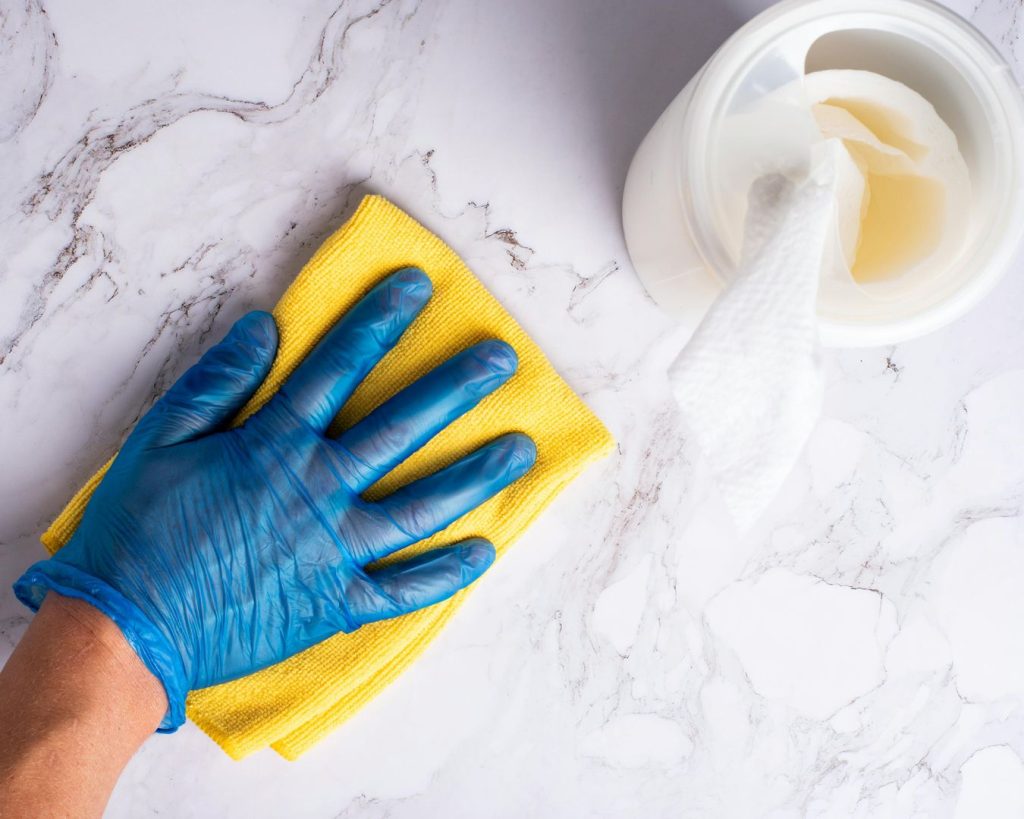Cleaning and Caring for Kitchen Backsplashes
A kitchen backsplash not only adds a stylish touch to your cooking space but also serves as a protective barrier against spills, splashes, and stains. To keep your kitchen backsplash looking pristine, it’s essential to understand the best practices for cleaning and maintaining it, especially since different materials require different care. Here’s a comprehensive guide on how to clean and care for backsplashes made of tile, glass, stainless steel, and other materials.
Tile Backsplashes
Tile backsplashes, whether ceramic, porcelain, or natural stone, are popular for their durability and aesthetic appeal. However, the grout lines can be prone to staining and require special attention.
Cleaning Tips
- Daily Cleaning: Wipe down the tiles with a damp cloth or sponge and mild dish soap to remove everyday grime.
- Tough Stains: For tougher stains, use a mixture of baking soda and water to create a paste. Apply the paste to the stain, let it sit for a few minutes, then scrub with a soft brush or sponge.
- Grout Care: Grout can become discolored over time. Use a grout cleaner or a mixture of vinegar and water to scrub the grout lines. For stubborn grout stains, a grout brush or an old toothbrush can be very effective.
Maintenance
- Sealing: Natural stone tiles and grout lines should be sealed regularly (every 6-12 months) to protect them from stains and moisture.
- Avoid Harsh Chemicals: Avoid using harsh chemicals or abrasive cleaners that can damage the tile surface or grout.
Glass Backsplashes
Glass backsplashes are sleek and modern, offering a reflective surface that can make your kitchen appear larger and brighter. They are relatively easy to clean but can show fingerprints and smudges.
Cleaning Tips
- Daily Cleaning: Use a glass cleaner or a mixture of water and vinegar with a soft cloth to wipe down the surface.
- Smudge Removal: For smudges and fingerprints, a microfiber cloth works wonders to give a streak-free shine.
- Tough Stains: For tougher stains, use a non-abrasive sponge and a mild detergent. Avoid using abrasive pads that can scratch the glass.
Maintenance
- Avoid Abrasives: Never use abrasive pads or cleaners on glass backsplashes to prevent scratching.
- Immediate Cleaning: Clean spills and splatters immediately to prevent them from drying and becoming more difficult to remove.

Stainless Steel Backsplashes
Stainless steel backsplashes offer a contemporary and industrial look. They are resistant to heat and stains but can show fingerprints and water spots.
Cleaning Tips
- Daily Cleaning: Wipe with a damp cloth and a mild dish soap. Follow the grain of the steel to avoid streaks.
- Fingerprints: Use a stainless steel cleaner or a mixture of water and vinegar with a microfiber cloth to remove fingerprints and smudges.
- Tough Stains: For tougher stains, a paste of baking soda and water can be applied. Use a non-abrasive sponge and scrub gently following the grain.
Maintenance
- Polish Regularly: Regularly polish with a stainless steel cleaner to maintain its shine and protect the surface.
- Avoid Bleach: Do not use bleach or chlorine-based cleaners as they can damage the stainless steel.

Other Materials
Backsplashes can be made from various other materials such as marble, granite, or laminate, each requiring specific care.
Marble and Granite
- Daily Cleaning: Use a pH-neutral cleaner or a mixture of mild dish soap and water.
- Avoid Acids: Avoid acidic cleaners like vinegar or lemon juice that can etch the stone surface.
- Sealing: Seal regularly to protect against stains and moisture.
Laminate
- Daily Cleaning: Use a damp cloth and mild dish soap.
- Avoid Excess Moisture: Do not use excessive water, which can seep into seams and cause swelling.
- Non-Abrasive Cleaners: Avoid abrasive pads or cleaners that can scratch the surface.
General Tips for All Backsplashes
- Immediate Action: Clean spills and splatters immediately to prevent staining and make cleaning easier.
- Soft Cloths and Sponges: Always use soft cloths, sponges, or microfiber cloths to prevent scratching surfaces.
- Test Cleaners: Test any new cleaner on a small, inconspicuous area first to ensure it doesn’t damage the material.
- Regular Maintenance: Regular cleaning and maintenance will keep your backsplash looking new and prolong its lifespan.
Proper cleaning and maintenance of your kitchen backsplash can keep it looking pristine and extend its life. Whether you have a tile, glass, stainless steel, or another type of backsplash, following these best practices will ensure your kitchen remains a stylish and functional space.

